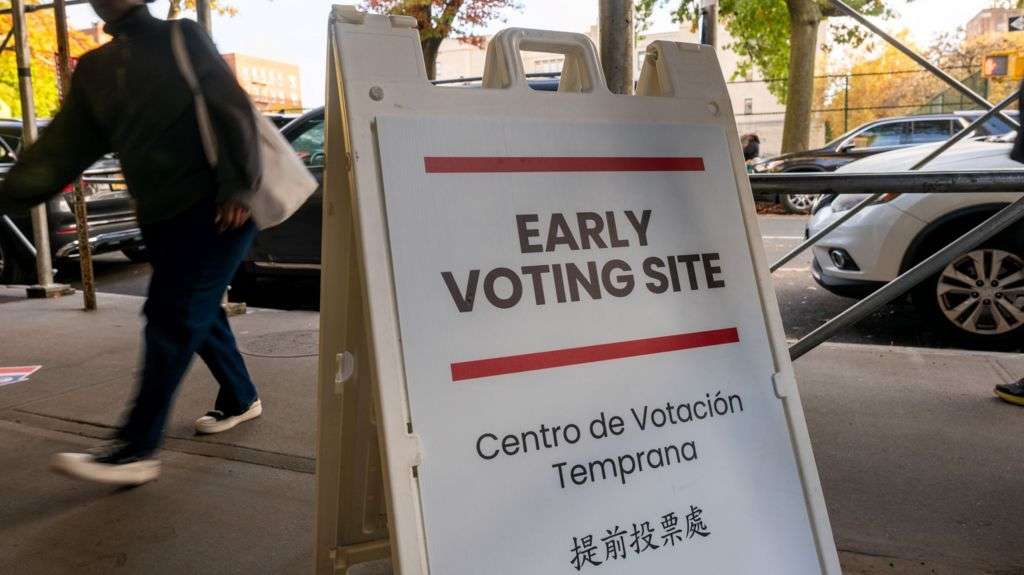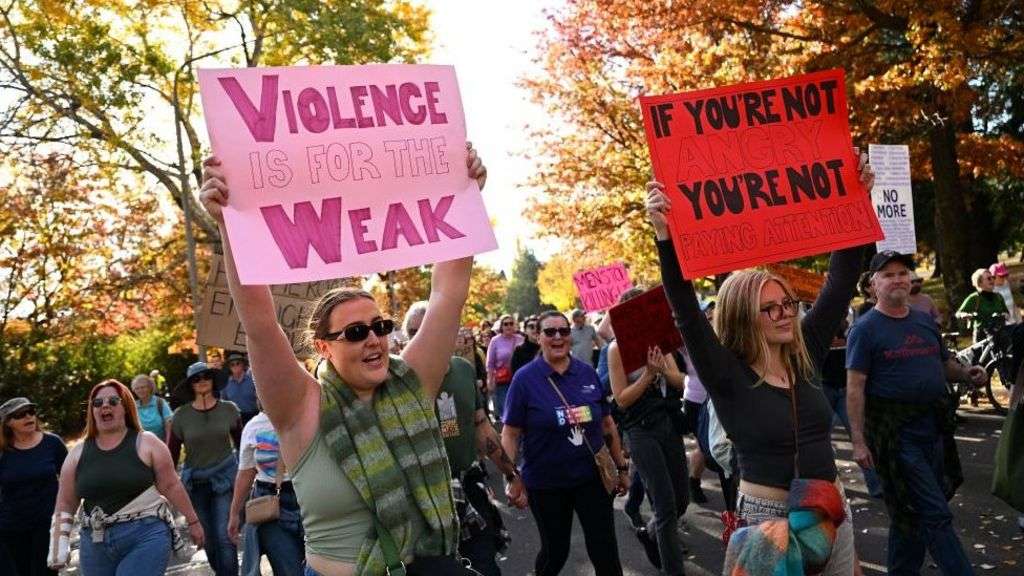Election day in the US is officially on Tuesday, but millions of Americans have already cast their ballots. With early voting events around the country drawing lines, more than 62.7m voters had handed in ballots by Thursday - a landmark number.
Partisans on both sides have been quick to cite the early voting data as evidence that their side is gaining some kind of decisive advantage. But what does it all mean? That's a hard question to answer.
There's one thing we can say for certain: American voting habits have changed as pandemic behavioural shifts stick around. This year's early voting totals are well shy of the 101.5m early ballots cast in 2020, when the Covid virus kept many away from crowded polling places, but it’s more than the total early votes cast in 2016 (47.2m) or 2012 (46.2m).
Though each state handles early voting differently, we can also learn a little about who is participating. Some states release raw totals of votes cast through mail-in ballots, in-person voting days or both. Many share the party registration of voters and sometimes more detailed demographic information, such as gender, race and age.
The rest of the picture, however, is much murkier and any insight into this election season is best taken with a heavy dose of salt.
Many of the conclusions about early voting are being drawn based on the demographic data alone. We won't find out which candidates these ballots have been cast for until election day.
But here's what I'm noticing, from state reports as compiled by the University of Florida Election Lab.
Fewer Republicans are waiting until election day
Republicans appear to be losing their wariness of early voting. In 2020, they made up 30.5% of the total early votes cast in the 20 states that track party registration, versus 44.8% for Democrats. That was due, in part, to Trump’s warning that mail voting was rife with corruption.
The former president is singing a different tune this year, and so far Republicans are too. They represent 36.1% of early votes cast across the country, while Democrats represent 38.9% (the remaining quarter has come from voters not affiliated with any party or who have registered with a third party).
That’s important because it means a “red mirage” effect may be less pronounced. Republicans took an early lead four years ago in places like Pennsylvania because election-day in-person votes were counted before poll workers tallied the early ballots, which leaned in support of Democrats.
Women are already turning out in large numbers
Meanwhile, Democrats this year might be encouraged by the gender gap – at least as far as early vote participation.
In the six states that report gender data, including the battlegrounds of Georgia, Michigan and North Carolina, women are casting 54.2% of the early ballots so far. That’s a few percentage points higher than the 2020 mark found in a post-election exit polls conducted by Edison Research.
If recent surveys are correct and women are now backing Democrats by a historically large margin, it could mean a boost for Vice-President Kamala Harris.
Mixed picture in key states
Drilling down into individual states, more than 50% of eligible voters have now cast ballots in Georgia – a sign that voter enthusiasm is high. The early turnout there is slightly whiter and older than the early voting 2020 electorate. That could help Donald Trump.
The former president is also getting good news in Nevada, where more registered Republicans have cast ballots than registered Democrats. That’s a dramatic break from past elections, when Democrats built up a big early voting advantage, particularly in the Las Vegas metropolitan area, which helped them prevail despite a surge of rural conservatives voting on election day.
Like most early voting data, Nevada’s tabulations come with an asterisk, however. A growing number of young voters are now unaffiliated independents even though they lean left. If they end up casting ballots for Harris, it could put the state into Harris’s column on election day.
There are similar glass half-full or half-empty examples all over the map. In Pennsylvania, for example, more registered Democrats have voted than Republicans – but they are doing so by a smaller margin than in 2020, when President Joe Biden won the state.
And none of that takes into account independent voters, frustrated moderate suburban Republicans who may be voting for Harris or traditional blue-collar Democrats who are now on board with Trump.
And, lest we forget, 158m Americans cast ballots for president in 2020 – 65.9% of the voting-eligible population. Even if we don't hit that mark this time around, there are still a lot of potential ballots waiting to be cast.
Political junkies may be desperate to read the tea leaves with just a handful of days until the election, but for the moment the results are mostly just hot water.








